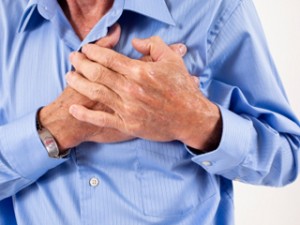The Risk of “Sudden Cardiac Arrest”
 This risk issue is important because “Sudden Cardiac Arrest” can happen to anyone, anytime, anywhere and at any age. Without early intervention the outcome is not good.
This risk issue is important because “Sudden Cardiac Arrest” can happen to anyone, anytime, anywhere and at any age. Without early intervention the outcome is not good.
What you need to know is sudden cardiac arrest (SCA) is a condition in which the heart suddenly and unexpectedly stops beating. If this happens, blood stops flowing to the brain and other vital organs. SCA usually causes death if it’s not treated within minutes. To understand SCA, it helps to understand how the heart works. The heart has an electrical system that controls the rate and rhythm of the heartbeat. Problems with the heart’s electrical system can cause irregular heartbeats called arrhythmias. There are many types of arrhythmias. During an arrhythmia, the heart can beat too fast, too slow, or with an irregular rhythm. Some arrhythmias can cause the heart to stop pumping blood to the body—these arrhythmias cause SCA.
SCA is not the same as a heart attack. A heart attack occurs if blood flow to part of the heart muscle is blocked. During a heart attack, the heart usually doesn’t suddenly stop beating. SCA, however, may happen after or during recovery from a heart attack. People who have heart disease are at higher risk for SCA. However, SCA can happen in people who appear healthy and have no known heart disease or other risk factors for SCA.
Most people who have SCA die from it—often within minutes. Rapid treatment of SCA with a defibrillator can be lifesaving. A defibrillator is a device that sends an electric shock to the heart to try to restore its normal rhythm. Sudden cardiac arrest is one of the leading causes of death in the U.S. Over 350,000 people will suffer from sudden cardiac arrest this year An AED is the only effective treatment for restoring a regular heart rhythm during sudden cardiac arrest and is an easy to operate tool for someone with no medical background.
Time-to-treatment is critical when considering the chance of survival for an SCA victim. Ninety-five percent of those who experience SCA die because they do not receive life-saving defibrillation within four to six minutes, before brain and permanent death start to occur. Below is a very powerful visual that shows chance of survival by minute. It’s been my experience that showing this is all it takes to get someone’s attention.
Here are a few success stories from the American Heart Association
- A 41-year-old worker at a manufacturer of heating and air-conditioning systems suffered a sudden cardiac arrest at work. After three shocks and CPR he was revived within 4 minutes. Fortunately, his company had AED’s and trained responders. By the time EMS personnel arrived, he had been resuscitated and was moved to a hospital. The employee survived.
- A 62-year-old employee of a coatings, glass, and chemical manufacturer suffered a sudden cardiac arrest after walking up the stairs to her office. She was defibrillated and saved in less than 2 minutes.
- An employee at an automobile manufacturer was working on the production line when he suddenly collapsed, lost consciousness, and stopped breathing. Plant security responded, and after two shocks with an AED, the employee’s heart responded and his pulse returned.
The 5 links in the adult Chain of Survival are:
- Immediate recognition of cardiac arrest and activation of the emergency response system
- Early cardiopulmonary resuscitation (CPR) with an emphasis on chest compressions
- Rapid defibrillation
- Effective advanced life support
- Integrated post-cardiac arrest care
A strong Chain of Survival can improve chances of survival and recovery for victims of heart attack, stroke and other emergencies. Every employer needs a health and safety committee. Do you and your employees have and AED? If not please consider it. Do it now!
This article was written by Dustin



